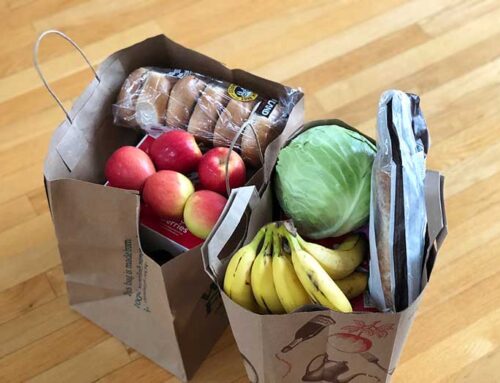Saving money is a crucial skill that can pave the way for financial stability and a brighter future. However, maintaining the discipline required for consistent savings can be challenging. To overcome this hurdle, engaging in money-saving challenges proves highly effective. These challenges offer structure, and a sense of accomplishment, and make the saving process enjoyable.
12 Best Frugal Living Challenges to Enhance Your Spending Habits
In this article, we present 12 ingenious money-saving challenges that foster healthy saving habits and amplify your savings. By embracing these challenges, you’ll not only amass funds but also gain valuable financial knowledge and resilience.
1. 30-Day No-Spend Challenge
To commence, the 30-Day No-Spend Challenge entails committing to a month of spending solely on necessities like groceries and bills. This challenge cultivates awareness of distinguishing between needs and wants, promoting mindful spending, and reducing superfluous expenses. Throughout the challenge, maintaining a spending record biweekly or daily reflects well on your progress. At the end of the month, assess the impact on your savings and adapt your spending habits accordingly, based on the insights gained.
2. Cash-Only Challenge

Secondly, in the Cash-Only Challenge, you exclusively use physical cash for all purchases within a designated period, such as a week or a month. This challenge heightens spending awareness and compels more conscious decision-making. When witnessing the physical depletion of money, it becomes increasingly difficult to overspend. Moreover, this challenge can enhance your bargaining power, as cash holds significant sway in negotiations.
3. Spare Change Challenge
Additionally, the Spare Change Challenge revolves around saving small amounts that accumulate over time. Each day, deposit loose change from your pockets or wallet into a dedicated container. Alternatively, employ a mobile app that automatically rounds up your purchases and saves the difference. This simple habit can yield substantial savings over months or even years, without significantly impacting your daily budget.
4. 52-Week Savings Challenge
Furthermore, the 52-Week Savings Challenge is a popular long-term saving method that progressively increases the amount saved each week. Begin with saving $1 in the first week, $2 in the second week, $3 in the third week, and so forth, culminating in $52 in the final week. By year-end, you will have saved $1,378. This challenge offers flexibility, enabling adjustments to suit your financial circumstances.
5. No Eating Out Challenge
In addition, the No Eating Out Challenge involves preparing meals at home for a specified period, such as a month. By eschewing dining out or ordering takeout, you not only save money but also enhance your cooking skills and nutrition habits. Plan meals in advance, create a grocery list, and utilize leftovers to minimize food waste. This challenge encourages culinary creativity and enhances overall dining experiences.
6. The Pantry Challenge
Moreover, the Pantry Challenge aims to curtail grocery expenses by utilizing existing items in your pantry and freezer. Rather than purchasing new groceries, experiment with the ingredients already available. Challenge yourself to craft delectable meals with limited resources. This exercise not only saves money but also declutters your kitchen and reduces food waste.
7. DIY Challenge
Additionally, the DIY Challenge encourages embracing do-it-yourself projects instead of relying on professionals or purchasing pre-made items. Whether it involves mending clothes, fixing household appliances, or crafting homemade gifts, tapping into your DIY skills can yield significant savings. Utilize online tutorials and community resources to acquire new skills and bolster your confidence. This challenge not only saves money but also empowers you to take control of your surroundings.
8. No-Spend Weekend Challenge
Moreover, the No-Spend Weekend Challenge entails abstaining from non-essential spending from Friday evening until Sunday night. Focus on free or low-cost activities like nature exploration, home organization, reading books, or quality time with loved ones. This challenge encourages a respite from consumerism and finding joy in simple pleasures without monetary expenditure.
9. The Digital Detox Challenge
Furthermore, the Digital Detox Challenge emphasizes reducing or eliminating digital purchases for a specified duration. By doing so, you become aware of impulsive buying triggered by online shopping platforms and social media advertisements. Limit screen time, unsubscribe from tempting marketing emails, and remove shopping apps from your devices. This challenge not only saves money but also enhances mental well-being by reducing exposure to relentless marketing and consumer pressure.
10. Energy-Saving Challenge

Additionally, the Energy-Saving Challenge centers on reducing utility bills by adopting energy-efficient habits. Make a conscious effort to turn off lights when leaving a room, unplug unused electronics, lower the thermostat, and enhance home insulation. These simple actions can significantly curtail energy consumption, resulting in long-term financial savings. Moreover, this challenge contributes to environmental sustainability by minimizing your carbon footprint.
11. 24-Hour Rule Challenge
Furthermore, the 24-Hour Rule Challenge aids in overcoming impulsive purchases by imposing a waiting period before making non-essential buys. Whenever the urge to buy something arises, wait for 24 hours and reconsider the purchase. During this time, contemplate whether the item is genuinely necessary and aligns with your financial goals. This challenge enables differentiation between impulsive desires and genuine needs, ultimately preventing regretful purchases.
12. Subscription Audit Challenge
Moreover, the Subscription Audit Challenge entails evaluating all subscriptions, such as streaming services, gym memberships, and monthly boxes. Identify those no longer utilized or providing value, and cancel them. Often, people accumulate subscriptions without recognizing the cumulative cost. By scrutinizing and eliminating unnecessary subscriptions, funds can be redirected towards savings or invested in subscriptions that genuinely enhance your life.
Conclusion:
In conclusion, money-saving challenges provide structure and motivation, aiding the development of healthy financial habits and bolstering savings. Be it the 30-Day No-Spend Challenge, Cash-Only Challenge, or Spare Change Challenge, each offers a unique approach to saving money and managing expenses. Embracing these challenges enables the achievement of short-term savings goals while cultivating enduring habits that positively impact your financial well-being. Remember, success hinges upon persistence, discipline, and the willingness to adapt spending habits. Embark on this gratifying journey toward financial freedom today.







Leave A Comment